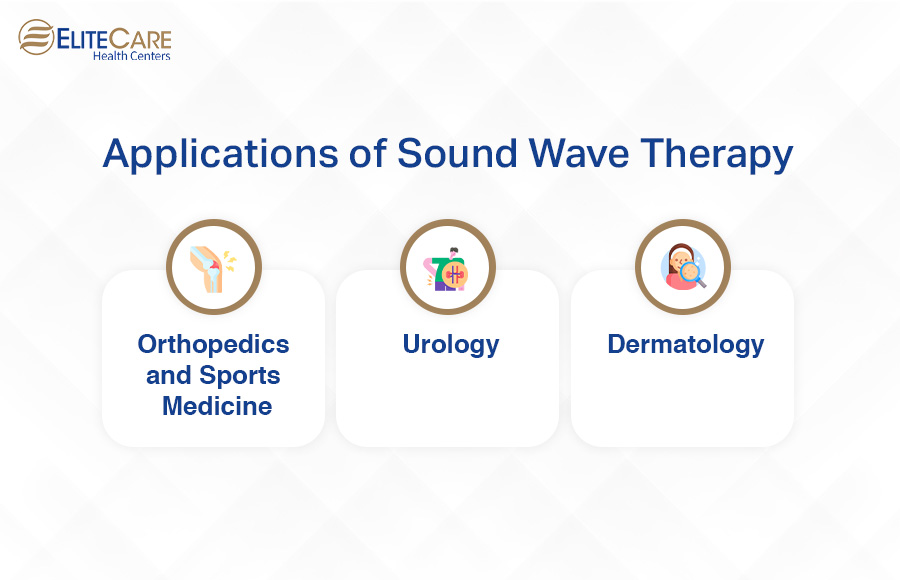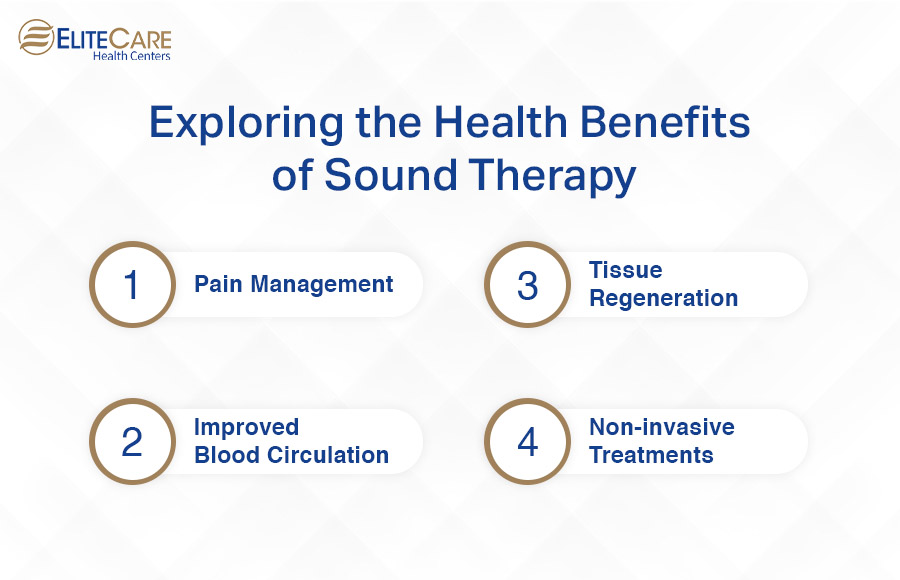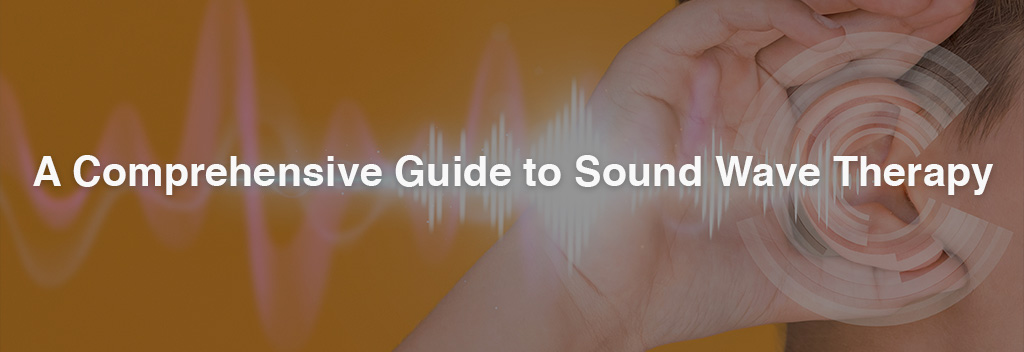
The field of medicine has seen a rise in interest in and research of alternative medication therapies in recent years. Sound Wave Therapy is one such cutting-edge technique that makes use of sound waves to enhance healing and well-being.
Origins and Evolution
Sound wave therapy, sometimes called shockwave or acoustic wave therapy, originates from several traditional healing techniques that use sound to promote healing. Many cultures have recognized the therapeutic value of sound, from singing bowls in Tibetan culture to chanting mantras in traditional Indian medicine.
Known as sound healing, it is a holistic approach to physical and mental well-being. Modern Sound Wave Therapy is greatly influenced by technological and medical research developments.
Researchers started examining how ultrasonic waves affected biological tissues in the middle of the 20th century, which set the groundwork for the creation of modern sound-based therapies.
Mechanisms of Action
Fundamentally, sound wave therapy works by stimulating the body’s molecular and cellular processes through acoustic waves. Focused ultrasound, radial shockwaves, and low-intensity pulsed ultrasound are some sound waves employed in the therapy. Each has a different purpose and working principle.
Sound waves can interact with tissues at varying depths to affect blood flow, tissue regeneration, and cellular signaling. A series of physiological reactions, such as the release of growth factors, improved circulation, and inflammatory control, are set off by this interaction.
Types of Sound Wave Therapy
1. Extracorporeal Shock Wave Therapy (ESWT)
One well-known type of sound wave therapy that is utilized in sports medicine, orthopedics, and rehabilitation is Extracorporeal Shock Wave Therapy. External application of high-energy shockwaves to the injured area promotes tissue regeneration and lessens pain. Plantar fasciitis, calcific shoulder tendinopathy, and other tendinopathies have all been successfully treated with ESWT.
2. Low-Intensity Pulsed Ultrasound (LIPUS)
Low-Intensity Pulsed Ultrasound stimulates the healing of musculoskeletal injuries by using low-energy ultrasound waves. This non-invasive technique is frequently used to treat fractures, speeding up the healing process and improving bone repair.
3. Focused Ultrasound Therapy
Targeted and concentrated ultrasonic waves are used in Focused Ultrasound Therapy to accurately ablate tissue or apply heat therapy. This method is used to treat neurological conditions, uterine fibroids, and certain tumors. Focused ultrasound is a potential therapy in several medical sectors since it may target specific locations with little harm to neighboring tissues.
Applications of Sound Wave Therapy

1. Orthopedics and Sports Medicine
Orthopedics and sports medicine are two important fields in which Sound Wave Therapy has shown outstanding effectiveness. ESWT has become well-known for its capacity to reduce persistent musculoskeletal pain, encourage tissue repair, and improve sports recovery. With everything from stress fractures to tendon problems, Sound Wave Therapy has proven to be an invaluable supplement to traditional therapies.
2. Urology
In urology, Sound Wave Therapy has become a popular non-invasive method for treating erectile dysfunction (ED). Low-Intensity Shockwave Therapy (LISWT) has demonstrated potential in encouraging the formation of new blood vessels, increasing penile function, and boosting blood flow. This creative method offers an alternative to conventional ED therapies like drugs or surgery.
3. Dermatology
Dermatology has identified uses for sound wave therapy, both therapeutically and aesthetically. Scar therapy, wrinkle reduction, and skin tightening are all achieved with high-frequency ultrasound waves. These methods are becoming more and more popular as non-invasive alternatives to surgical interventions.
Exploring the Health Benefits of Sound Therapy

1. Pain Management
The effectiveness of Sound Wave Therapy in managing pain is one of its main health advantages. Research indicates that sound waves can be a useful tool for treating a variety of pain disorders, including tendinitis, joint soreness, and chronic musculoskeletal pain. This approach provides patients with a non-invasive alternative to conventional pain management techniques by reducing inflammation, promoting tissue healing, and improving blood flow.
2. Tissue Regeneration
Sound Wave Therapy has demonstrated remarkable potential in promoting tissue regeneration. This is especially true in the fields of sports and orthopedic medicine, where the therapy’s capacity to promote recovery is beneficial for ailments including tendinopathies and stress fractures. The activation of cellular signaling pathways by sonic waves increases growth factor production, which promotes the regeneration of injured tissues.
3. Improved Blood Circulation
Applying sound waves opens blood capillaries and enhances blood circulation, a phenomenon known as vasodilation. Improved blood flow is essential for providing tissues with nutrition and oxygen, enabling them to perform at their best, and fostering general cardiovascular health. Because of its beneficial effects on blood circulation, sound wave therapy can be used to treat ailments other than musculoskeletal disorders.
4. Non-invasive Aesthetic Treatments
Sound Wave Therapy is being used for several non-invasive procedures in dermatology and aesthetics. Ultrasound waves with high frequencies can tighten skin, minimize wrinkles, and enhance the visibility of scars. For those looking for non-surgical alternatives to surgery, these therapies are tempting due to their mild yet effective nature. Thus, Sound Wave Therapy is finding its way into the field of anti-aging and cosmetic therapies more and more.
Safety Considerations and Side Effects
While Sound Wave Therapy is generally considered safe, it is crucial to acknowledge potential side effects and contraindications. Mild discomfort during the operation, redness, or bruising in the treatment area are common adverse effects.
Pregnancy, specific medical conditions, or the existence of implants close to the targeted location are examples of contraindications.
Adherence to established protocols, proper patient selection, and thorough medical evaluation are essential to minimize risks and optimize the therapeutic benefits of Sound Wave Therapy.
In conclusion, Sound Wave Therapy stands at the forefront of healthcare innovation, offering a non-invasive and versatile approach to address a myriad of medical conditions. From its ancient roots to the modern scientific exploration of its mechanisms, applications, and safety considerations, Sound Wave Therapy represents a promising frontier in the quest for effective and patient-friendly healthcare solutions.
As research continues to unfold, Sound Wave Therapy has the potential to redefine treatment paradigms across various medical disciplines, providing clinicians and patients with new tools to enhance healing and improve quality of life.
The journey of Sound Wave Therapy is an evolving narrative, and its chapters are yet to be fully written as the field continues to resonate with possibilities and discoveries.
Contact EliteCare Health Centers, one of the finest healthcare centers in Florida to learn more. Schedule an appointment with a board-certified primary care physician and explore a wide range of senior care services, including annual physical exams and preventive care.
Frequently Asked Questions
The therapy works by applying controlled sound waves to targeted areas of the body. These waves interact with tissues, promoting cellular and molecular responses that contribute to pain relief, tissue regeneration, and improved blood circulation.
Sound Wave Therapy is well-tolerated, and patients often experience minimal discomfort during the procedure. The level of discomfort can vary depending on the specific type of therapy and the individual’s pain threshold.
Sessions typically range from 15 to 30 minutes, but your healthcare provider will provide specific information based on your individual treatment plan.





